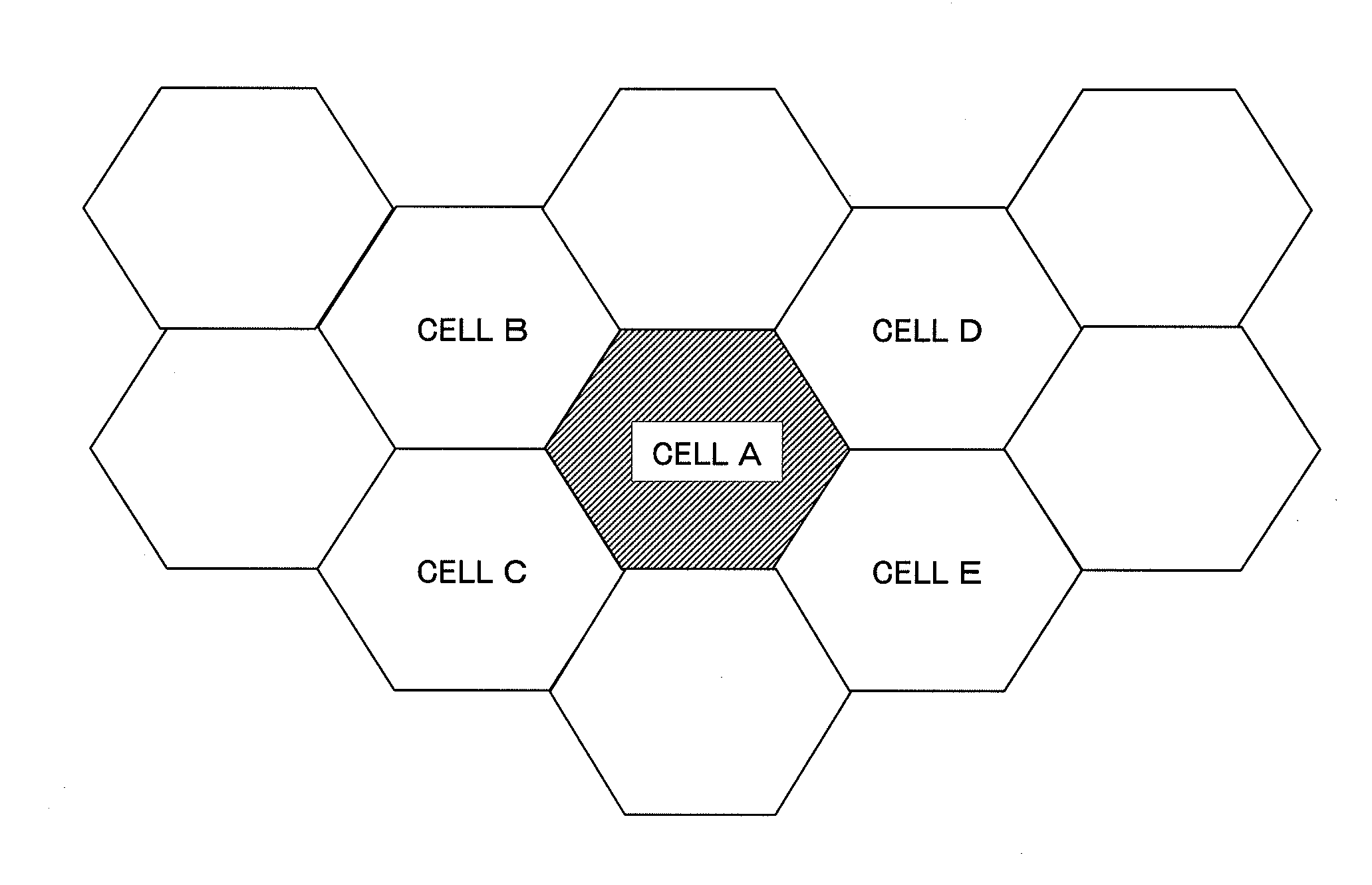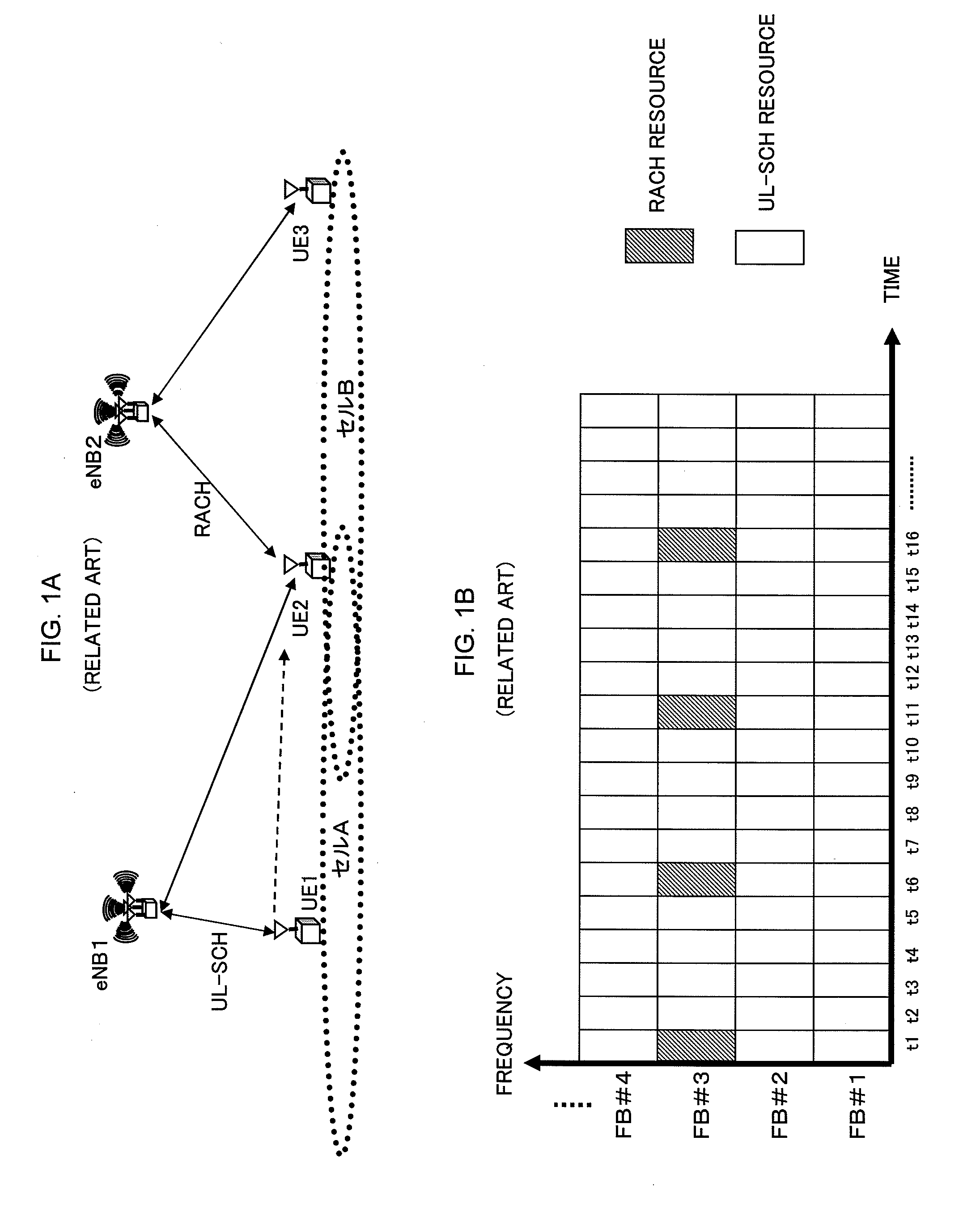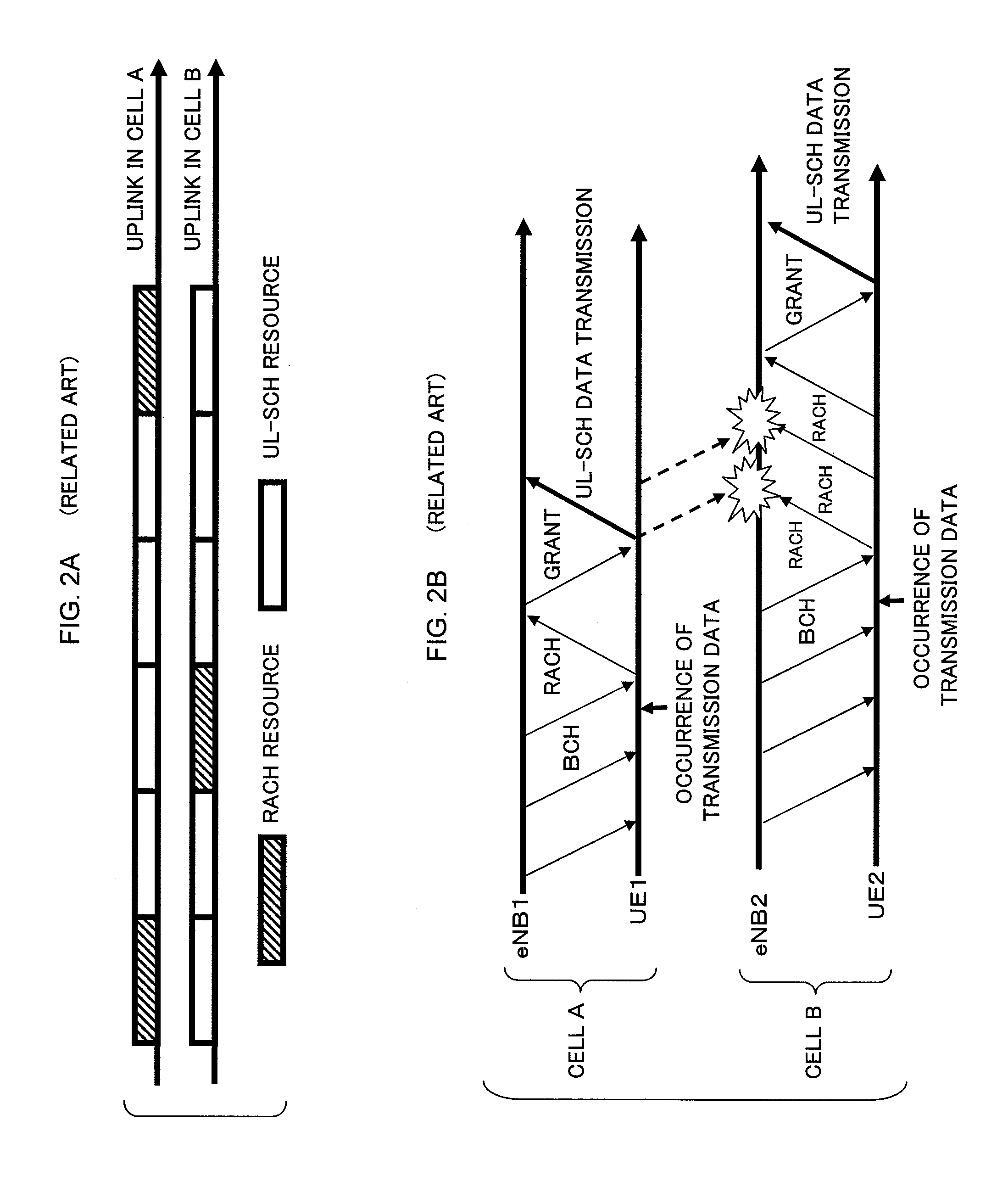Method and device for resource allocation control in radio communications system
a radio communication system and resource allocation technology, applied in the field of radio communication systems, can solve the problems of delay in processing, interference of ul-sch transmission by pach transmission in one of the cells, delay in call setup in the neighboring cell, etc., and achieve the effect of reducing inter-cell interferen
- Summary
- Abstract
- Description
- Claims
- Application Information
AI Technical Summary
Benefits of technology
Problems solved by technology
Method used
Image
Examples
examples
5. System Structure
[0064]FIG. 8 is a block diagram showing a schematic structure of a radio communications system including radio communication devices implementing the present invention. Here, it is assumed that a plurality of radio communication devices including radio communication devices 10 and 11 are communicably connected to each other through a network 12. In addition, it is assumed that the radio communication devices 10 and 11 control cells A and B respectively, and that each of the cells A and B has the resource structure shown in FIG. 4. Each radio communication device performs UL-SCH scheduling by adopting any one of the resource allocation control methods according to the above-described first to third exemplary embodiments.
[0065]The plurality of radio communication devices connected through the network 12 may be included in a single base station eNB, or each radio communication device may be a single base station eNB. In any case, when a plurality of mobile stations U...
first exemplary embodiment
7. Operation of First Exemplary Embodiment
[0079]FIG. 12 is a flow chart showing the resource allocation control method according to the first exemplary embodiment of the present invention. Base stations eNB respectively controlling neighboring cells share RACH resource information on the respective cells with each other, by each base station eNB reporting, through the RACH resource control section 102, RACH scheduling information and currently occupied RACH resources to the other base station eNB (Step S301). Subsequently, the buffer resource setting section 105 of each base station eNB determines whether or not the level of RACH interference obtained from the RACH-related information measurement section 103 is larger than a predetermined threshold value (Step S302). When the level of RACH interference is larger (Step S302: YES), the buffer resource setting section 105 sets buffer resources for its neighboring cell, based on the RACH resource information on the neighboring cell in q...
second exemplary embodiment
8. Operation of Second Exemplary Embodiment
[0080]According to the second exemplary embodiment, a base station eNB operates as follows.[0081]The base station eNB reports RACH scheduling information currently in use to a neighboring cell.[0082]The base station eNB sets resources corresponding to the RACH resources and nearby resources of the neighboring cell, as uplink buffer resources. These uplink buffer resources can be used by a VoIP mobile station UE, or a mobile station UE that is located around the center of the cell and therefore has high path loss to the neighboring cell.
[0083]More specifically, RACH and UL-SCH resource allocation control between cells is performed as follows.
[0084]FIG. 13 is a flow chart showing the resource allocation control method according to the second exemplary embodiment of the present invention. Base stations eNB respectively controlling neighboring cells share RACH resource information on the respective cells with each other, by each base station eN...
PUM
 Login to View More
Login to View More Abstract
Description
Claims
Application Information
 Login to View More
Login to View More - R&D
- Intellectual Property
- Life Sciences
- Materials
- Tech Scout
- Unparalleled Data Quality
- Higher Quality Content
- 60% Fewer Hallucinations
Browse by: Latest US Patents, China's latest patents, Technical Efficacy Thesaurus, Application Domain, Technology Topic, Popular Technical Reports.
© 2025 PatSnap. All rights reserved.Legal|Privacy policy|Modern Slavery Act Transparency Statement|Sitemap|About US| Contact US: help@patsnap.com



